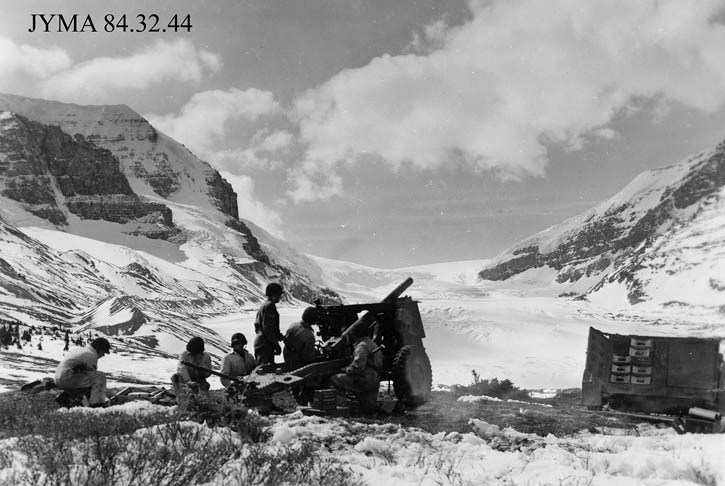The Columbia Icefield encapsulates millions of years of geographic history. Ice and snow carve out the never-ending battle between rock and water, leaving breathtaking scenery in its wake.
However, the stunning vistas were also the scene of a brief chapter in Second World War history.
Scotland’s Lovat Scouts arrived in Jasper National Park in December of 1943 after finishing up mountain training in Scotland’s Cairngorms. The Scouts were expected to be part of an invasion force that was scheduled to invade Norway – a mission that was eventually scrapped.
They spent their time mountaineering on the Columbia Icefields, and in March of 1944, 35 scouts made it to the top of Mount Columbia – the first recorded winter ascent of the mountain.
“They had a wonderful time. They’re out there skiing, going up mountains. What was maybe the nicest experience of their life was followed by what I’m sure is the most terrible experience of their life,” said Banff author Chic Scott, who wrote about the Lovat Scouts in his book Powder Pioneers.
Under the command of experienced mountaineer and devout Christian Rex Gibson, the Scouts learned skills such as winter camping and mountaineering. Gibson and Frank Smythe, another mountaineer, discovered the chalet on what is now the Icefields Parkway in Oct. 1943 and thought it would be an ideal training ground for the Scouts.
The largest group of Scouts (about 600) arrived at Jasper Park Lodge in 1943, where they were taught to ski on the Jasper golf course, then taken up the slopes of The Whistlers and Signal Mountain. They suffered one casualty, when L/Cpl. Alexander ‘Sandy’ Collie was killed in an avalanche near the Columbia Icefields.
The training included several winter ascents of Nigel Peak, Wilcox Peak and Columbia Peak. During many of the expeditions, the soldiers carried their survival gear, as well as a rifle and 50 rounds of ammunition.
“They were training in skiing, winter camping, carrying their guns. They would move around – a big part of warfare is to move around and live. They would learn how to get water out of a creek – and had target practice,” Scott said.
The journey left an impression on Scouts Lieutenant Sydney Scroggie, who lost his leg and vision in the last week of the war while fighting in Italy. He later found work as a switchboard operator, but would still climb mountains, his hand on the shoulder of his mountaineering companion.
Scott met Scroggie on a trip to Scotland, where the two traded stories of mountain adventure.
“His wife would pick me up in Dundee and we’d drive to the cottage. Sydney would be in a chair in front of the fire and there would be a small table. I’d sit down and his wife would bring two cans of Boddington and two glasses of whiskey. He’d light up a cigarette and we’d tell stories,” Scott said.
“Scouts look back on these days, for all the hard work, as the happiest time of their lives,” Scroggie is quoted as saying in Powder Pioneers.
However, the training turned out to be all for not. Instead of a mission in Norway, the Scouts were sent to Italy, where they fought in humid, Mediterranean landscapes alongside many Canadians.
“They were sent to Italy and it was very nasty fighting. The Italian troops were kicked out of the way by the Germans, who fought a strong rearguard action. They booby trapped everything – that’s probably the largest theatre of war the Canadians fought in,” Scott said. In all, 90,000 Canadians battled in Italy, along with the Scouts.
While the training proved to be irrelevant, it still provided several fond memories.
“It would have given them camaraderie, but there was no practical application for the training,” Scott said.




